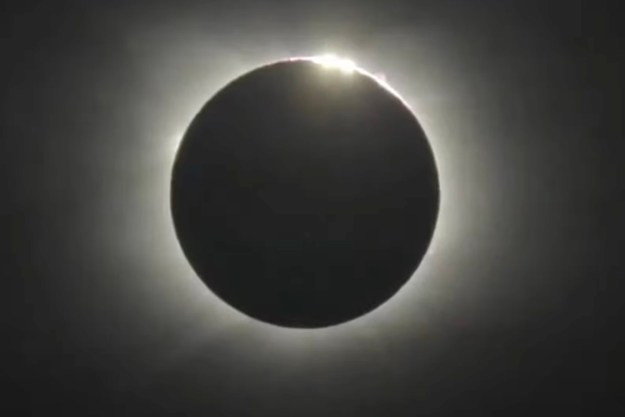On the day of America’s most-watched sporting event, NASA has dabbled in a spot of wordplay and posted a feature highlighting “10 impressively super, bowl-shaped venues adorning worlds in our solar system.”

The list includes the extraordinary Stickney Crater on Phobos, one of the two moons of Mars.
It’s about 6 miles (10 km) in diameter and even has a smaller crater inside it.
Keeping with the Super Bowl theme, NASA’s Amanda Barnett writes: “Note that if the average speed of an NFL throw is 50-60 mph, and the escape velocity of Phobos is 25 mph, then it’s conceivable that a pro quarterback could throw a ball right off Phobos and into orbit around Mars.”

Located between Mars and Jupiter, the tiny dwarf planet of Ceres is home to Occator Crater, an impact site 57 miles (92 km) across and 2.5 miles (4 km) deep. The crater is the brightest spot on Ceres, a feature the result of its highly reflective salt deposits.

Jezero Crater has become something of a celebrity since the start of NASA’s Perseverance Mars mission last year. Jezero, a dried lake bed, was the landing location for the Perseverance rover in February 2021, and the site is now being explored by the vehicle in the hope of discovering evidence of ancient microbial life on the distant planet.
Rather less bowl-like than some of the craters we see here, Jezero is 28 miles (45 kilometers) wide and exists within Mars’ Isidis Planitia region, the site of an ancient meteorite impact that left behind a large crater some 750 miles (1200 kilometers) across. A subsequent, smaller meteorite strike within the Isidis impact basin led to the creation of the Jezero Crater.

At 170 miles (2745 km) across, Mead Crater on Venus is one of the planet’s largest impact sites and was created by a massive collision that took place between 300 million and a billion years ago. The remarkable image of the crater (above) was created using a collection of radar images captured by NASA’s Magellan spacecraft.

A notable entry in Barnett’s collection is Meteor Crater — also known as Barringer Crater — that exists right here on Earth, in Arizona. Judging by its size (0.75 miles/1.2 km across; 600 feet/170 meters deep), it’s a spot you wouldn’t want to have been standing in when the impact occurred some 50,000 years ago.
Barnett notes that the crater is “bigger than your average stadium,” and was also a training site for the Apollo astronauts ahead of their lunar missions five decades ago.
Be sure to check out NASA’s article for all 10 of its amazing “super, bowl-shaped venues.”
Editors' Recommendations
- NASA video maps all 72 flights taken by Mars Ingenuity helicopter
- Junk from the ISS fell on a house in the U.S., NASA confirms
- What kind of view will ISS astronauts get of the solar eclipse?
- NASA astronauts will try to grow plants on the moon
- How to safely watch April’s total solar eclipse, in person or online


